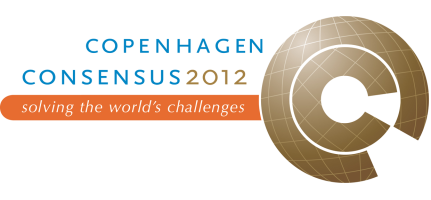Third Copenhagen Consensus: Infectious Disease Assessment, Jamison Jha et al
Perspective Paper
Dean Jamison, Prabhat Jha, Ramanan Laxminarayan, and Toby Ord identify five top priorities in the fight against infectious disease. The working paper used by the Expert Panel is available for download here, the finalized paper has been published in Global Problems, Smart Solutions - Costs and Benefits by Cambridge University Press.
The most important of these is malaria treatment. There is a rapid spread of resistance of the malaria parasite to the previously effective, inexpensive, and widely available drugs that have provided an important partial check on the high levels of malaria child deaths in Africa. The resistance to these older drugs is leading to a rise in deaths and illness that could be substantial. The death rate increase results in hundreds of thousands more deaths than would otherwise have occurred. A high priority for additional spending is to reduce the relative prices that poor countries face for new artemisinin combination therapies, (through the so-called ‘Affordable Medicines Facility-malaria’). Every million dollars spent on this ‘Facility’ means about 300,000 more children treated, of which 20,000 are children with severe malaria. Among these, the deaths of 1,000 children would be averted. Thus, spending $300 million a year would save 300,000 child deaths, with benefits put in economic terms that are 35 times higher than the costs. Various donors are reviewing extending this Facility this fall, and this analysis suggests it is one of the best returns on health that could be made globally.
The second intervention is the control of tuberculosis (TB), which is the leading infectious disease killer of adults after HIV/AIDS. Nearly 9 million new cases and perhaps 1.6 million deaths were caused by TB in 2003, with nine out of ten in low- and middle-income countries.
The spread of HIV infection in parts of Africa and drug resistance suggest that the current approach might not be able to bring TB under control, especially in Africa and the former Soviet Union countries. Addressing resistance increases costs and the short-term benefits in saved lives are limited. This means that compared to 2008, when the costs and benefits were calculated for the last Copenhagen Consensus project, the benefits for each dollar spent are actually lower. But, with each dollar achieving more $15 worth of benefits in economic terms, TB control remains a worthwhile investment. Spending $1.5 billion would save 1 million adult deaths annually.
The third approach Jamison outlines is expanding case-management of acutely ill children and adding several new antigens to routine vaccinations. These include Haemophilus influenza type b (Hib) and Streptococcus pneumonia which are common causes of childhood pneumonia; hepatitis B which protects against liver cancer; and newer rotavirus and shigella vaccines against diarrhea. The Global Alliance for Vaccines and Immunization estimates that the addition of Hib and pneumococcal vaccines to vaccination programmes could save 800,000 lives a year by 2010, and rotavirus and shigella vaccines might save 600,000 by 2010. In total, Jamison’s team estimate that spending about $1 billion annually on expanded immunization coverage would save 1 million child deaths annually. Put into economic terms, the benefits would be twenty times higher than the costs.
Another priority is de-worming. Although the costs of worm treatment are low and the prevalence is high, this remains a neglected infection. From complications with digestion to difficulty absorbing nutrients, worms can be detrimental to a person’s overall wellbeing, including productivity, appetite, fitness, and growth. Children are at greater risk of infection than adults and will suffer more severe, lifelong complications if worms are left untreated. Children who experience worm infection often live in poor communities and need a sustainable treatment plan to remedy any loss in education, nutrition and intellectual development they may experience. Spending $300 million would mean about 300 million children could be dewormed, with benefits in economic terms ten times higher than the costs.
No other threat comes close to the AIDS epidemic in threatening every aspect of development for dozens of countries. Unfortunately, it is also in many ways the hardest to tackle. Jamison’s team draw on research created for the Copenhagen Consensus and Rush Foundation project ‘RethinkHIV’ to identify priorities against this disease. The most effective preventive interventions against HIV are those targeting sex workers and those most likely to contribute to increased transmission, as has been done successfully in India and other Asian countries. Voluntary counseling and testing has reduced unsafe behavior in some studies, although the duration of this change is not clear. Prevention of mother-to-child infection is cheap and effective, and needle exchange and blood safety programmes can reduce other modes of transmission.
An HIV vaccine is the ultimate preventative tool. The researchers draw onRethinkHIV research by Robert Hecht and Dean Jamison on the costs and benefits of increasing research funding to speed up the arrival of a useful vaccine. Jamison concludes that there is a strong case for increasing HIV vaccine research and development by $100 million annually. Even with conservative assumptions, each dollar spent would generate benefits worth 20 times the costs.

